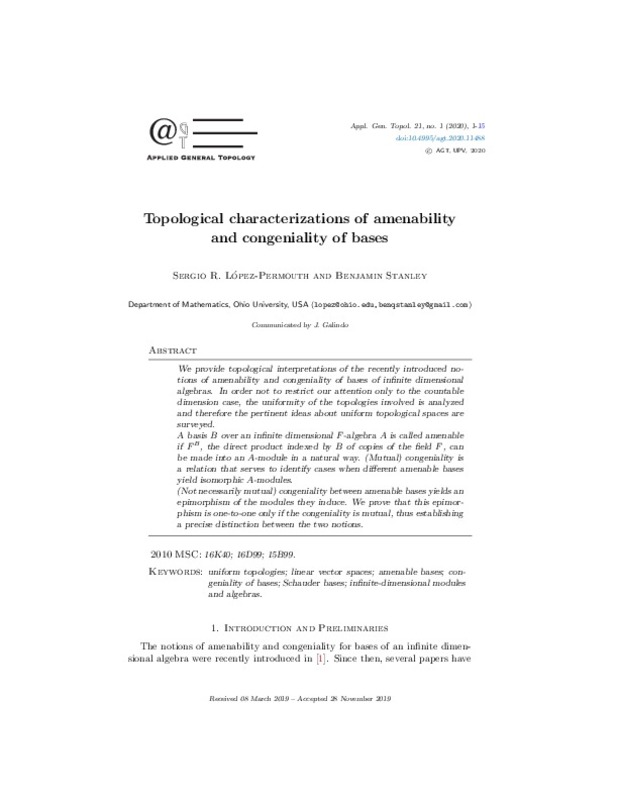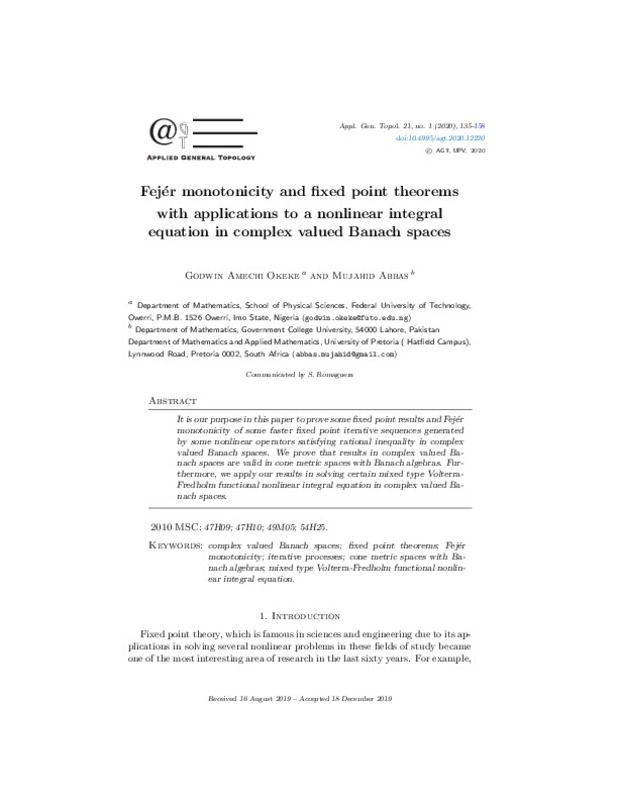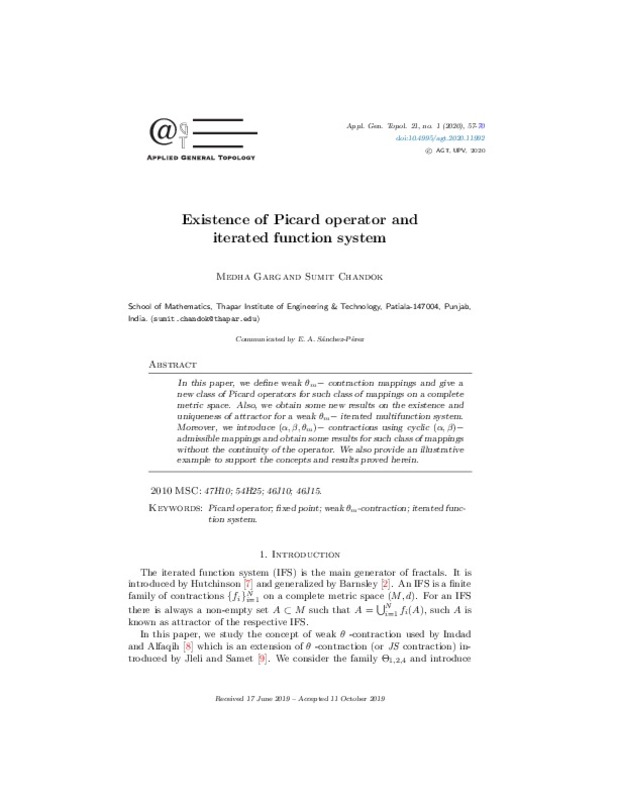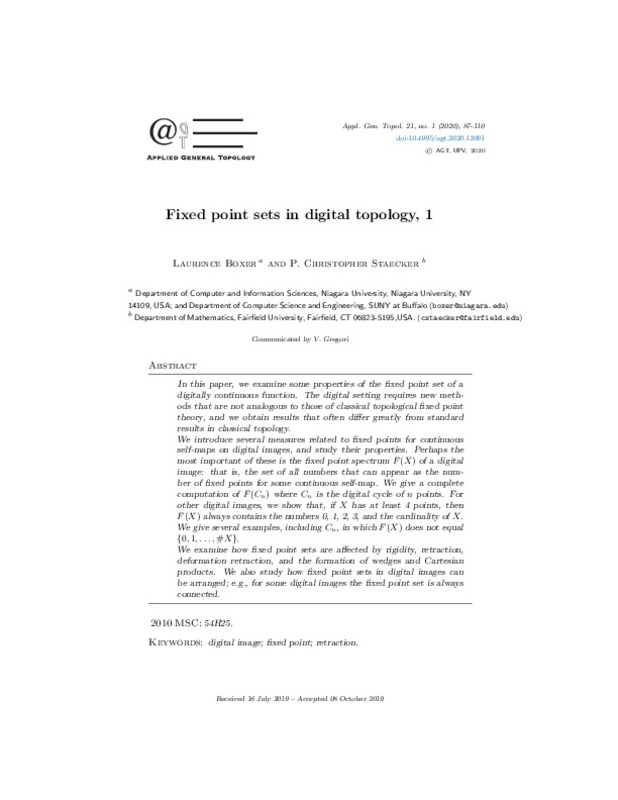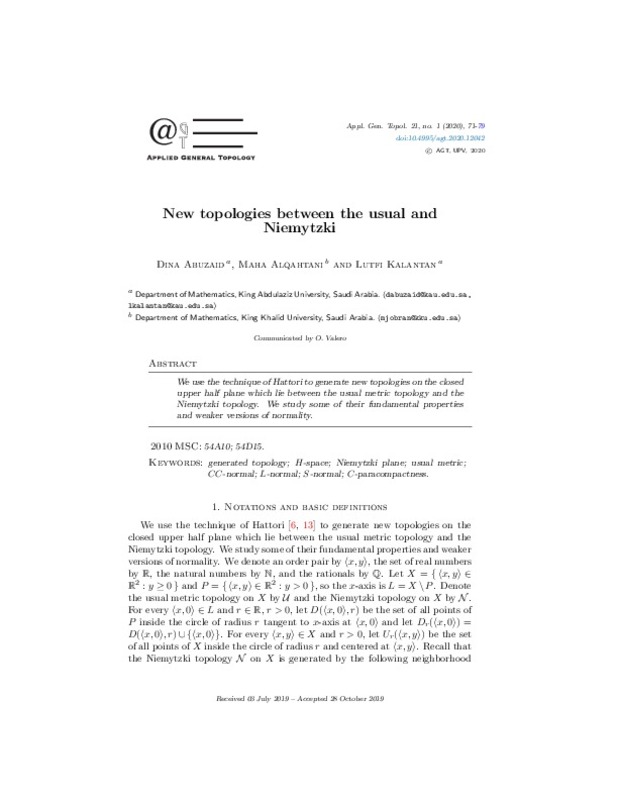- RiuNet repositorio UPV
- :
- Investigación
- :
- Material investigación. Editorial UPV
- :
- Revistas UPV. Editorial UPV
- :
- Applied General Topology
- :
- Applied General Topology - Vol 21, No 1 (2020)
JavaScript is disabled for your browser. Some features of this site may not work without it.
Refinar
Applied General Topology - Vol 21, No 1 (2020)
Tabla de contenidos
- Topological characterizations of amenability and congeniality of bases
- Dynamic properties of the dynamical system SFnm(X), SFnm(f))
- On a metric of the space of idempotent probability measures
- Counterexample of theorems on star versions of Hurewicz property
- Existence of Picard operator and iterated function system
- New topologies between the usual and Niemytzki
- A note on rank 2 diagonals
- Fixed poin sets in digital topology, 1
- Fixed point sets in digital topology, 2
- Fejér monotonicity and fixed point theorems with applications to a nonlinear integral equation in complex valued Banach spaces
- Selection principles and covering properties in bitopological spaces



